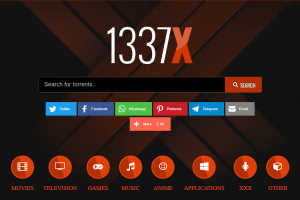As we move further into the 21st century, a surprising trend is capturing the hearts of music lovers everywhere: the resurgence of retro music media. From vinyl records to cassettes, these old-school formats are coming back with a vengeance, offering unique opportunities for musicians aiming to make a significant impact. This revival is more than just nostalgia; it’s a strategic edge in a highly competitive industry.
The Rise of Vinyl – More Than Just Nostalgia
Vinyl records, once thought to be relics of the past, are now leading the charge in the retro music revival. Sales have skyrocketed, with collectors and new fans alike seeking out both classic albums and new releases in this format. For musicians, this resurgence offers a unique opportunity to deliver their music in a format that fans value not only for the audio quality but also for the tactile and visual appeal of large-format cover art.
Artists releasing music on vinyl are seeing their work appreciated on a deeper level. Vinyl demands active listening, pulling fans away from the passive consumption that often accompanies digital music. By releasing music on vinyl, musicians can create a listening experience that is as intentional as the music itself. This hands-on engagement is invaluable for building a dedicated fanbase.
The Unexpected Return of Cassettes
Surprisingly, cassettes are making a comeback, too. Once the staple for 80s and 90s music lovers, cassettes offer a sense of nostalgia and a novelty that digital streaming can’t match. For new artists, cassettes are a low-cost entry into physical media, easier to produce and distribute than vinyl, and they provide a quirky, retro medium that can help an artist stand out.
Cassettes also encourage a sort of community among collectors and enthusiasts. At cassette release parties or swap meets, fans can come together, share their favorite finds, and discover new music. For musicians, these gatherings are perfect for networking, allowing you to expand your friend group through similar musical interests and increase your visibility in the music scene.
CDs – Not Quite Gone and Not Forgotten
Contrary to popular belief, CDs have not vanished from the music scene. In fact, they are experiencing a resurgence as collectors and audiophiles seek to reclaim the crisp, digital clarity that CDs offer. While not as pronounced as the vinyl or cassette revival, the renewed interest in CDs presents another avenue for artists to present their music in a physical form.
CDs offer the benefit of higher capacity and durability, which makes them an excellent medium for deluxe editions and box sets. For musicians, offering limited edition CD packages featuring bonus tracks, behind-the-scenes content, and elaborate booklet art can attract fans who seek a more comprehensive physical connection to the music they love. CDs also remain a popular choice for merch tables at live events, where fans are eager to support their favorite artists in tangible ways.
The Vinyl Vanguard – Self-Releasing Your Signature Sound
Vinyl isn’t just a retro trend; it’s a major-league player in the music industry once again. For aspiring big-time musicians, diving into vinyl isn’t just about following a trend—it’s about leveraging a movement. Self-releasing your own vinyl records is a strategic approach that enhances your visibility and solidifies your artistic identity. By putting out records, you are delivering a physical piece of art that resonates with the tactile and visual preferences of music lovers.
Creating your own vinyl is an immersive process. It starts with the music, where the audio quality has to be pristine, considering vinyl’s dynamic range and warmth. From there, it involves designing memorable artwork that represents the visual aesthetic of your brand. This step is crucial as the album cover becomes a significant part of the vinyl experience. The final piece involves collaborating with a pressing plant to ensure the records are of the highest quality.
By having your own custom vinyl records pressed, you’re not just releasing music; you’re crafting an experience. This move is a game-changer and sets you apart from those who only stream their music online. It shows your commitment to quality and to providing a tangible piece of your musical journey to your fans. As a result, vinyl can become a centerpiece of your merchandising strategy, often commanding higher prices and creating a more profound connection with your audience.
Reintroducing Retro – Engaging with a Broader Audience
As retro music media like vinyl, cassettes, and CDs make their comeback, they bring with them unique opportunities for musicians to connect with broader and more diverse audiences. Each format attracts different types of listeners, from audiophiles to collectors to those who cherish the nostalgic element. Embracing these media in your releases allows you to engage with each group in a meaningful way.
For instance, by offering combo packages that include a vinyl record, a cassette, and a CD, you cater to various preferences and maximize your outreach. This strategy not only increases your sales but also boosts your visibility across different demographics and age groups. Additionally, by tailoring your marketing to highlight the unique qualities of each format, you can generate buzz and excitement around your releases, further driving your appeal as an artist.
These physical formats offer the perfect avenue for special edition releases, such as live recordings, B-sides, or remixes, which can become highly coveted items among your fan base. Offering these limited editions helps create a sense of urgency and exclusivity, encouraging quick sales and deepening fan engagement.
Why Retro is Your Ticket to the Top
The resurgence of retro music media is more than a trend; it’s a powerful tool for aspiring musicians looking to make a significant impact in the music industry. In a digital world where music is often consumed passively and fleetingly, offering tangible, high-quality alternatives sets you apart and creates lasting connections with your audience. As you look to climb the ranks in the music industry, consider how these retro formats can serve as both a bridge to the past and a gateway to future success. Dive into the world of physical media and let your music leave a tangible legacy that resonates with fans, old and new.


